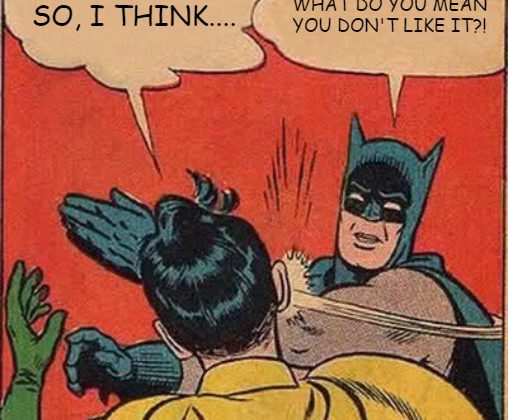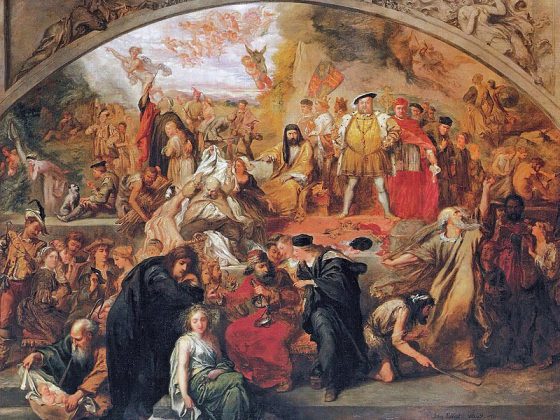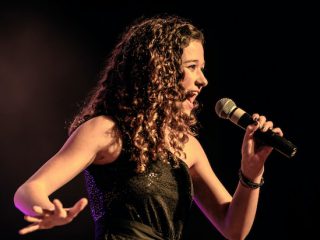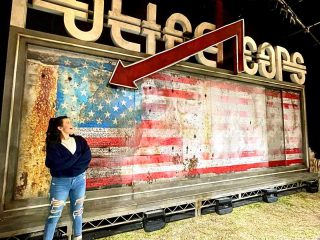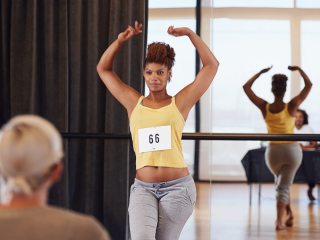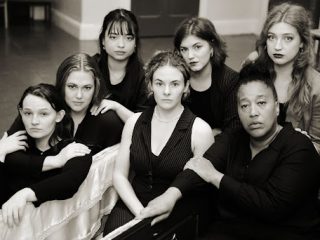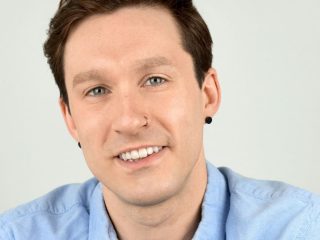I hope you’re all doing ok in this crazy pandemic world we all find ourselves in. I am so glad that I still have a platform to introduce you to amazing artists that will inspire you to keep moving towards your dreams, even if that progress looks a little different right now.
I’ve been reaching out to some amazing artists who are on the technical side of theater for those of you out there who love theater but know you don’t want to be actors. So, this week, I’ve got an amazing interview from one of my FAVORITE lighting designers: Cha See (she/her/hers)!

Photo by Ntokozo Fuzunina Kunene
Now, I don’t say this lightly: Cha See is one of the coolest people you’ll ever meet. Cha looks great in beanies, always seems relaxed, will give you a huge hug even before she knows or trusts you, always makes people laugh right when they need it most, has an adorable dog named Duncan…seriously the coolest.�
Born and raised in Manila, Philippines, Cha’s resume is pretty extensive. She graduated with an MFA in Lighting Design for Stage and Film from NYU Tisch and has worked in many reputable theaters in New York and all over the country, including Playwrights Horizons, Joe’s Pub, PlayMakers Rep, Long Wharf Theater, New York Theatre Workshop…so many more.
I was blessed to work with Cha on the tour of What to Send Up When It Goes Down this past fall in D.C., Boston, and then The Public Theater this past January. I was a mess in a lot of ways during this time (see my other blog post on imposter syndrome), but Cha immediately made me feel like she wanted to know me and cared that I was there. This is not always the case (especially during a tour), because often it can feel like actors and designers are in completely different worlds and don’t interact. Not Cha. Cha has a passion and a spark for life and the work that is contagious and magnetic. Don’t sleep on Cha. Cha is crazy talented and (did I mention?) crazy cool.
If you’re thoroughly convinced that you want to know more about Cha, take a read. She has an amazing story that will be poignant to those of you interested in lighting design, but also to those of you interested in hearing from an impressive artist. We could all use some inspiration these days, am I right?!
Q: Who are you and where are you from?
My name is Cha and my last name is See. I am Cha See and I go by she/her/hers but I do not really care because where I am from we don’t use pronouns in our language. I am from Manila, Philippines (born and raised) and currently live in Brooklyn, New York
Q: What is your profession?
I am a freelance lighting designer for stage and environmental installations.
Q: When did you first discover theater? Did you know right away that it was something you wanted to pursue?
I had no idea that lighting was something I wanted. Back in the day in Manila, there was no online enrollment, so I had to read brochures and physically enroll myself in the college I wanted. I went in and saw that no one was enrolling in Technical Theatre—everyone was into Gaming and Digital Design. That’s the only reason I ended up getting a B.A. in Technical Theatre because only a few wanted it.
In my first year, I became a member of our drama club, and one day the artistic director asked me to light one of the featured plays. I immediately said yes even though I didn’t know what I was signing up for.
Q: What was your process of becoming a professional lighting designer?
Ever since I was introduced to lighting, I’ve never stopped doing it. I never stopped searching for answers because no one in the Philippines is actually professionally trained to do lighting. I had to do my own research: traveling to neighboring countries, reading books, watching all those VCD’s of musicals from New York and circus shows, trying to study Shakespeare, Beckett, and Pinter.
I had to dig deep because there were no available resources. I had no mentor and my training in college was only an introduction to lighting. There was no standard method like here in the U.S.
I designed fashion shows, corporate events, straight plays, musicals, and still I was not satisfied because I knew that I still needed to learn a lot. I kept doing this for six years.
Q: What do you love about lighting? Why did you choose it over other areas of design?
I chose lighting because it is so abstract. You can’t touch it and it is even hard to talk about it. Lighting design is an endless possibility. It cannot survive without actors, sets, costumes, sounds, music, and props. It is a key player in a team. I love it because it demands so much from my mind and soul. It demands a lot of attention and craft and understanding that is solely based on impulses and my translation of emotionality in the piece that I am designing.
Q: What is the hardest part about being a lighting designer?
A lighting designer is a collaborator in the process of building a show. The hardest part about it is pretending to know what you’re doing before you get on stage. Ha! One needs confidence pitching your ideas to your collaborators on paper in a way that can then be translated on stage. This can be hard and nerve-wracking but as long as you have done your homework as a designer everything will magically fall into place. It is the hardest part but also the most rewarding part.
Q: What is your favorite show you’ve ever designed and why?
My most recent favorite design was the world premiere play “One in Two” by Donja R. Love and directed by Stevie Walker-Webb. The show in itself is very challenging narratively and almost impossible to show visually. It has so many locations that happen in a character’s mind and the set design was a white box that had almost no scene-changes. The lighting had to transcend the audience’s imaginations on where we are in the story.
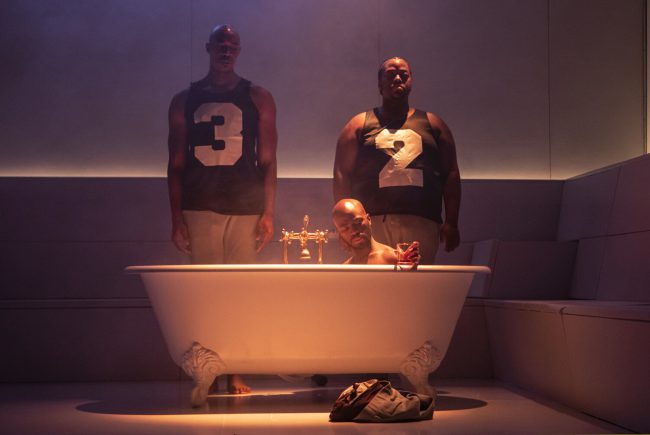
ALICE GRIFFIN JEWEL BOX, SIGNATURE THEATRE
WRITTEN BY DONJA R. LOVE
DIRECTED BY STEVIE WALKER-WEBB
SETS BY ARNULFO MALDONADO
COSTUMES BY ANDY JEAN
SOUNDS BY JUSTIN ELLINGTON
PHOTO BY MONIQUE CARBONI
I had to consider the balance between the reality of the location vs. the emotionality of the characters when sculpting each scene. I felt like both Realism and Heightened Realism were my two best friends when telling this specific story. It was really exhausting.
Q: What are some things you wish you knew before you became a lighting designer?
1. Be an observer– a lot of stillness and observing the surroundings. A lot of quiet.
2. Be fine with being alone– a lot of alone time in hotel or Airbnb rooms. A lot of traveling too.
3. Be a book/play nerd– a lot of reading.
4. Be an investigator -you need to be an investigator, or good at finding clues in what the text/script is saying and also in what my collaborators want to do with it.
5. Have people skills– as a designer you are not just a designer but also a manager. You are managing an entire team of lighting—associate, assistant, programmer
6. Create a routine and good habits – you work for 12 hours and then travel back and forth for another two hours. Eating healthy and having morning/night routines are very helpful to my process.
7. Have grace/patience – we work a lot under pressure and stressful environments. One must learn how to be graceful and be patient enough to know that things will happen eventually.
8. Have awareness of your surroundings– reading the news and knowing what your collaborators and the actors are saying is an integral part of the process. Research the time period at least five years before the play was written and five years after the play was written. This applies to any play. Knowing who wrote it, why the play was written, and why we are doing it now are also really important parts of the research.
9. Be Adaptable– traveling a lot is part of the lifestyle. You won’t have the time to get to know the place where you will be next. You have to be open to adapting to different kinds of cultures.
10. Be organized– from your paperwork to your tech table to Dropbox folders, everything has to be labeled and organized.
Q: What is one of the best pieces of advice you’ve received?
Can I have two best pieces of advice? From two of my mentors? Haha!
From Allen Lee Hughes, “Be BOLD!” and from Susan Hilferty, “If you have this much power, what are you going to do with it?”
Q: Where can people find out more about you?
Website: Seelightingdesign.com
Rosco Spectrum Article�
Instagram: @seethruuu

